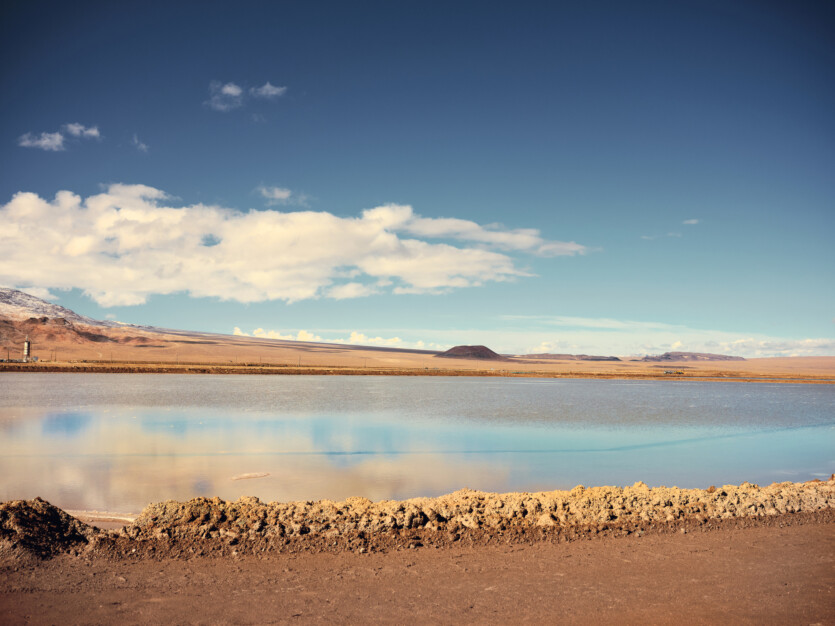Scientists from the University of Massachusetts at Amherst have found in a new study, that freshwater reserves in the so-called «lithium triangle» in South American countries are 10 times smaller than previously thought.
The researchers used a custom-designed model and found that freshwater flows are 10 times less than previously thought, putting local ecosystems and indigenous populations at risk. «The Lithium Triangle» includes Chile, Argentina and Bolivia, which account for more than half of the world’s reserves of this metal.
The researchers say that current models used to estimate available freshwater supplies and environmental impacts of lithium mining in these countries have significant shortcomings. The study, published in the journal Communications Earth & Environment, emphasizes that current models overestimate the available reserves of accessible water by more than an order of magnitude. The demand for lithium is expected to increase 40-fold over the next few decades amid a large-scale shift to renewable energy sources.
According to the senior author of the study, Professor of Geophysical Sciences David Boutte, lithium is the lightest metal that cannot remain in solid form. У «lithium triangle» This metal is mainly found in volcanic ash layers, where it comes into contact with water easily.
During rains or snowmelt, moisture seeps through these layers, transferring lithium to groundwater. From there, it then flows downhill and accumulates in flat desert basins. There, lithium accumulates in brine, which is heavier than fresh water. As a result, it enters surface water pockets, where it forms layered lagoons that serve as home to local ecosystems.
These lagoons are often home to vulnerable species such as flamingos and are also of great importance to local people. Any excessive use of water poses a risk of upsetting the ecological balance.
According to the study’s lead author and UMass Amherst researcher Alexander Kirshen, 28 different water basins in the «lithium triangle». These basins are mostly located in the high, very arid and remote mountainous areas of the Andes Mountains. The total area of lithium mining in South America is 257.495 thousand square kilometers. Throughout this area, there are only a few sensors and monitoring stations that can be used to track factors such as flow and precipitation.
David Boutte adds that the hydrology and climate of the area «lithium triangle» is very difficult to understand. In this regard, the researchers relied on global water models in their study to make the most accurate assessment of the availability of water and the environmental impact of lithium mining in the region.
According to the two most commonly According to the global water quantity models used, the freshwater reserves that flow into the basins in the «lithium triangle» are about 90—230 mm per year. However, the researchers concluded that this model would be too inaccurate in their study. With this in mind, the scientists built their own model, called the Lithium Closed Basin Water Availability Model, or LiCBWA.
«These systems do not receive much new fresh water at all. The general consensus is that the amount of water is overestimated by at least an order of magnitude. And we found that all but one of the 28 basins in our study should be classified as «critically water-stressed», even without taking into account current, let alone future, water supply requirements», — explains David Boutte.
According to researchers, the actual amount of fresh water that flows into the basins «lithium triangle», ranges from 2 to 33 mm per year. This also depends on each specific pool, with an average of only 11 mm per year for the 28 pools.
Meanwhile, lithium extraction methods are also changing. Instead of evaporating brine with lithium, the technology of direct extraction of this metal is increasingly being used. In particular, 56% of lithium mining companies use direct extraction, which requires even more water. Almost a third of the plants use 10 times more water than the evaporation method.
Scarce lithium for batteries has been extracted directly from lakes
The results of the study were published in the journal Communications Earth & Environment
Source: SciTechDaily
